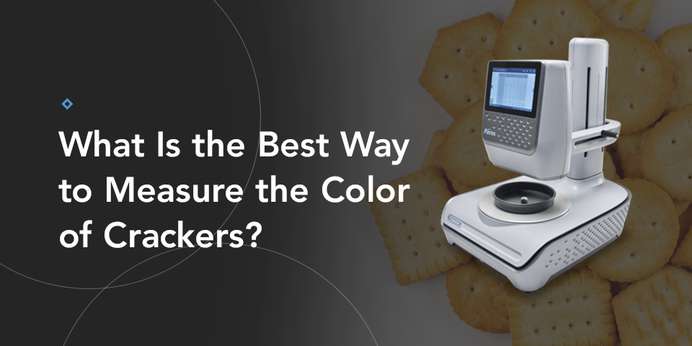Using Spectrophotometry
Visual inspection introduces subjectivity and variability. Each person sees color differently, and their assessments vary based on their degree of eye fatigue and the existing light source.
Spectrophotometry collects quantifiable data, allowing greater accuracy in comparing samples. A spectrophotometer uses a controlled light source that shines on a sample. Some light is absorbed, and the rest is emitted to a detector, which analyzes the spectral data and compares it to industry-standard color scales and indices.
A spectrophotometer affords several advantages for measuring snack cracker color. These solutions can record many measurements in seconds and also assess a large sample area to understand the overall appearance. A non-contact spectrophotometer measures without touching the sample for additional process speed and hygiene.
How to Measure Cracker Color Using a Spectrophotometer
Here's how to measure the color of crackers using a spectrophotometer:
- Select a sample: Choose several crackers to fill the spectrophotometer sampling tray, covering the bottom completely.
- Calibrate the device: Prepare for measurement by calibrating the spectrophotometer.
- Choose measuring protocols: Select the color scales, indices, and illuminant/observer metrics.
- Engage the device: Capture the measurement data and wait for the information to display.
- Record and interpret: Collect the data shown on the screen and compare it to preestablished measurement standards.
These steps enable you to determine how the spectral data for a particular sample matches a standard for the desired appearance. Based on the results, you can adapt ingredients, set different baking times, or make other changes to enhance consistency across batches.


